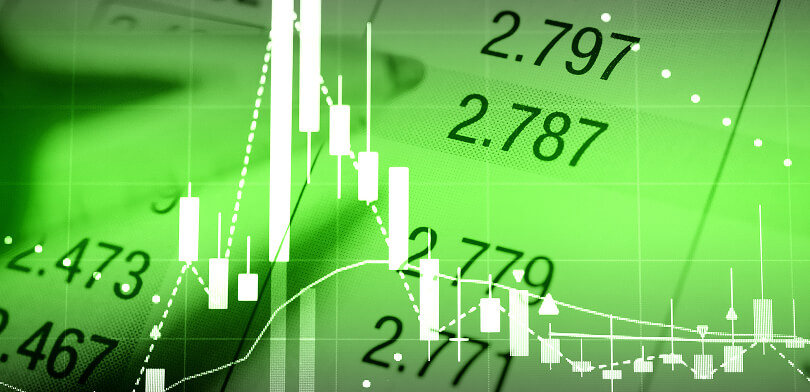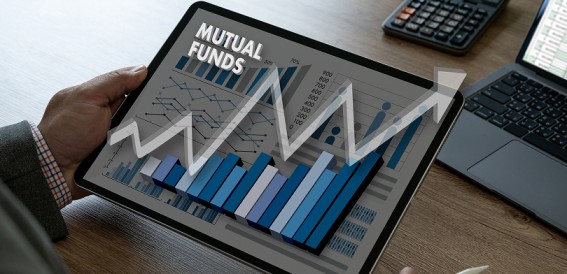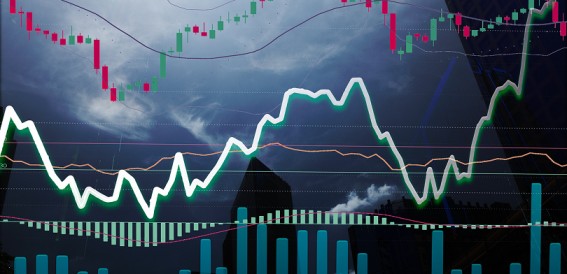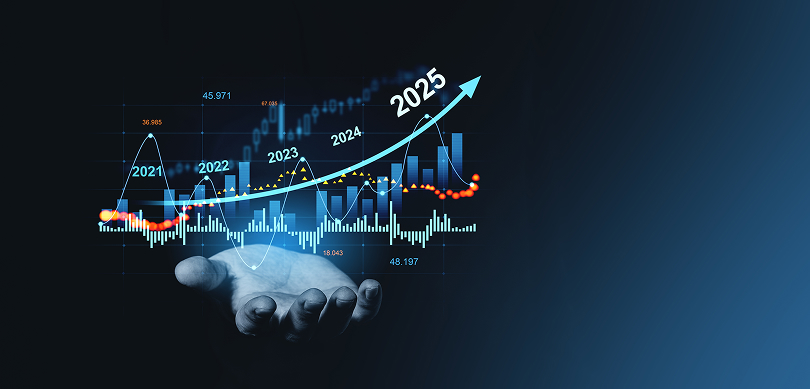Use of Algorithm based trading system is becoming an integral part of trading and investing in the financial markets, providing an automated solution for participants. Traders are now using this automated software for various segments in the market, like equity, commodity, futures or options, etc.
Trading with Algo is not only faster, but also more efficient and cost-effective with higher trading volumes in trades. Over time, it has become more effective, delivering increasingly accurate results. Hence, an understanding of this AI-based trading application is important to make the best use. Here we are going to discuss about the basic concept of Algo trading and other key aspects.
What is Algorithmic Trading?
Algo trading is a kind of automated trading system that uses computer-based programming to follow a predefined set of instructions to place orders or perform various trading-related activities. The Algo trading software or application is trained on machine learning based models to analyse the market situations and perform accordingly while considering the parameters set by the users.
It can perform multiple activities, including the execution of trades with high speed and accuracy, to produce a high volume of trades. Using the Algo trading software, you can trade with various predefined popular trading strategies or can also create your own customised strategy as per the current market conditions. The set of instructions for Algo could be based on the price, volume, timing, and market trend while considering the risk profile and funds availability of the users to get the best returns.
Recommended Read: Algo Trading Features & Benefits
How Does Algo Trading Work?
Algo trading software or applications are developed with certain programming and coding to instruct the computer system to make the right decision as per the situation in the market. It works purely on the basis of market data available on real-time basis and removes emotional biases from trading decisions. When activated on the system, it works automatically when the pre-defined criteria are met.
The Algorithms in such software are capable of trading as per the various types of trading strategies that have been tested and already used by the traders. However, users can also customise these strategies or create and deploy their own defined strategies in the Algo. It can work at a very fast speed while performing multiple transactions, while maintaining accuracy. Let’s find out how it works and its basic infrastructure behind the functionality of the algorithms and its various components.
Market Data Analysis: The Algorithm trading software works on the market data. Hence, Algo gather market-related data like price volume, price change and chart patterns. The Algo also examines various indicators to analyse the trends and generate signals based on the market movement.
Strategy Formulation: Based on the market data and analysis, Algo formulate the strategy using various tools and indicators to define the best suitable strategy as per the current market condition. Based on the strategy, Algo will initiate the execution of trades and proceeds with further transactions.
Signal for Trades: Based on the set of rules and predefined conditions, when all criteria are met, Algo generates the signal to buy, sell, book profits or exit from the existing trade positions of the underlying security. The signal generation in Algo leads to execution of the transaction.
Trade Execution: The next step is order placement, in which, based on the predefined criteria the transaction is executed as per the defined price and quantity in the trading strategy. The Algo is also set for further transactions like booking the profit or exiting from the trade position, etc.
Risk Management: At the time of executing the transactions, Algo follows the right management strategy to deal with unexpected movement of the market. It can determine the size of trade, set the stop-loss levels and resize the trade position as per the changing market conditions.
Monitoring and Adjustment: Algo is designed to continuously monitor market movements and track the position of the traded security. Based on the changing market dynamics, the Algo keeps adjusting the strategy and trade positions to minimise the risk of unexpected moves.
Backtesting and Optimisation: However, before deploying any strategy in Algo, its backtesting is performed to check the results and accuracy of outputs in various market conditions. Backtesting allows you to use historical or live market data to fine-tune your strategy, helping you adapt to market changes and achieve more accurate outcomes.
Adaptability to Market Changes: One of the most important things an efficient Algo must be trained to adapt itself to perform or work as per the changing market conditions or with new trends, new events and new developments in the market to get the favourable results.
Recommended Read: Using Algo Trading for Smarter Trades
Pros and Cons of Algorithmic Trading
Trading with Algo can be interesting as well as enjoyable, as it is backed by technological advancement, where human intervention is minimal. Though, it can give good results if the strategy is back-tested and fine-tuned to work in various unexpected market conditions. But there are various ifs and buts that make the Algo trading favourable as well as precarious among various traders. Let’s find out why a few traders love to trade with Algo and why many of them still avoid this automated trading system.
Benefits of Algo Trading:
Automated Trading: Algo is an automated trading system that doesn’t need much human involvement, except initial actions to set up and activate the Algo. As per the predefined instructions, it can perform all the actions itself to pick a strategy, place an order, book profit and exit from the trade position.
Speed with Efficiency: Being a computer based application it can perform at very high speed with high efficiency to generate a high volume of trades in the shortest time. Though, the speed and efficiency also depends on the capability and productivity of the computer system.
High Level of Accuracy: No human involvement in trading with Algo reduces the chances of errors. Hence, the accuracy level is very high even while performing a complex level of transaction.
Multiple Transactions: It can handle multiple tasks at a time and can perform different transactions simultaneously without affecting its performance.
Emotion Free Trading: There is no room for Algo to take impulsive actions influenced by fear, greed or taking biased decisions influenced by emotional or psychological factors.
Risk Management: It can judge the potential losses and keeps adjusting the trade positions or uses the stop loss strategy to minimise the impact of risk in unexpected market conditions.
Low Transaction Cost: No need for constant human deployment, and the capability to perform high-speed transactions reduces the cost of transactions in trading.
Backtesting of Strategies: Using the historical market data as well as live market data, you can backtest the strategy and optimise the Algo to enhance its performance.
Recommended Read: Algo Trading Strategies & Tips
Drawbacks of Algo Trading:
Dependency of Data: Algo uses a huge amount of data to analyse the market condition, so getting accurate and reliable data at an affordable cost can be a major challenge.
High Deployment Cost: The initial cost of development, deployment, testing and maintenance of the Algo trading software is very high, and not affordable for everyone.
Lack of Human Decisions: Algo can be misled by new types and unexpected changes in the market, where humans can take better decisions with their cognitive behaviour and experience.
Risk of Over Optimisation: Modifying the Algo to suit current market trends can lead to difficulties when facing unexpected market conditions.
Risk of Technical Breakdowns: Deployed and runs on the computer system, hence highly susceptible to technical breakdowns, glitches or errors in software, which can put the trades at high risk.
Risk of Market Manipulation: The Algo can be used for high-frequency trading and can also be used to manipulate the market movement by exploiting large volumes of trades at unexpected prices.
Impact on the Market: The use of Algo at a large scale or for trading large volume data can create volatility in the market due to abrupt movement in the market or in the price of the underlying security.
Summing-up
Algo trading is simply a process of using the automated trading software or web-based application for performing various actions like market analysis, order placement, profit booking and other trading-related actions. It works on the basis of gathering market data at a large scale and analysing the situation to perform as per the set of instructions or parameters selected by the users to trade with the right strategy.
The trading strategies in Algo can be backtested and optimised to tune as per the changing market conditions to get the desired results. It can perform at very high speed efficiency and accuracy, while also handling multiple transactions and managing risk effectively. However, its installation cost is high, and its performance can be affected due to a lack of sufficient and accurate data, with the risk of technical failures.












